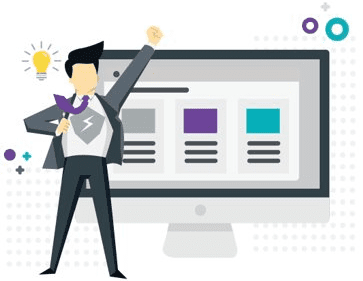
Here’s how to line up speakers that will deliver high-quality content and a great experience for your association’s learners.

A strong continuing education program requires quality content and a great overall learning experience. The speakers that present your material are critically important for delivering the kind of quality content that engages and delights your learners.
Here are four steps for lining up speakers that will help your association deliver a great learning experience for your members:
1. Develop speaker personas.
To find the right speakers for your content, you need to know your requirements. Just as you would create learner personas to better understand your learners, create personas of the types of people you want to invite to speak.
Personas are fictional representations of your target audience – in this case, your speakers. They can help you articulate the qualities you want in your learning program speakers by envisioning a single, ideal speaker.
Here are somethings to think about as you develop speaker personas:
- What is their area of expertise
- How much experience should they have?
- How relevant is their experience to your audience?
TIP: Once you’ve created your speaker personas, match them with your learner personas to ensure you’re targeting the right types of speakers for your learners’ needs.
2. Find real-life speakers that match your personas.
With speaker personas in hand, it’s time to find the actual people to develop and present your learning content. Here are some possible places to look for the right speakers:
- Your organization – Your association represents a specific trade or industry, so you likely have some of the expertise you need in-house. Or, your team might know someone who fits the bill. Send out a “call for speakers” to your staff, and share the personas you’ve created so employees understand what qualities you’re seeking.
- Your association’s conferences – Look at surveys from past events, and consider asking highly-rated speakers to present content for your learning program.
- Your networks – Look within your own social and professional network by searching profiles on LinkedIn or even putting out a call via your social media accounts to let your friends and family know what type of speakers you need.
- Your competitors – Check out competing associations’ events and learning programs to see who’s speaking. Chances are, they’ve secured speakers who are a good fit for your learning program content.
- Industry webinars and podcasts – Be on the lookout for well-regarded experts in your industry who are publishing their own content.
3. Put the right technology in place.
Presenting (and for that matter, attending!) an online learning course may seem dull and uninspiring. Offer engaging, interactive features in your online experience to help make speakers (and attendees!) feel more engaged. Some ideas:
- Q&A – For live streaming events, allow attendees to ask questions via chat that the speaker can answer live.
- Polling – For live streaming or re-broadcast events, ask polling questions and display the results to help attendees interact and feel a part of the audience.
- Surveys – Ask for feedback during and after each session, just as you do at in-person sessions.
- Workshops – If you’re webcasting a live event, work with your speakers in advance to talk about ways to involve online attendees in any group activities; for example, by engaging online learners via chat functionality.
TIP: The Freestone learning management system (LMS) by Community Brands is an e-learning platform that supports networking and interaction opportunities in your inline learning experience.
4. Prep your speakers.
Make sure your speakers are comfortable with the technology they’ll be using to present their content. It will help them deliver a better attendee experience. Here are some tips:
- Have first-time webinar speakers record their sessions without an audience. Speakers may feel more comfortable and can take time to pause and re-start if needed. You can re-broadcast the sessions later.
- Set up a prep call to make sure tech-averse speakers understand how your platform works.
- Make sure speakers are aware of the technology features they can use, such as Q&A, polling, surveys, etc., to make their sessions more engaging.
TIP: Offer to review your speakers’ slides and run through their presentations with them to make suggestions. For example, you might ask speakers to start their session with compelling data or an anecdote. Suggest that they include an agenda at the beginning and return to it as they change subjects within the agenda. Invite them to use polling and video where appropriate to spice up their presentations.
Take your professional education program to the next level
Educational content is a key member benefit. Discover more ways to up-level your online continuing education program.